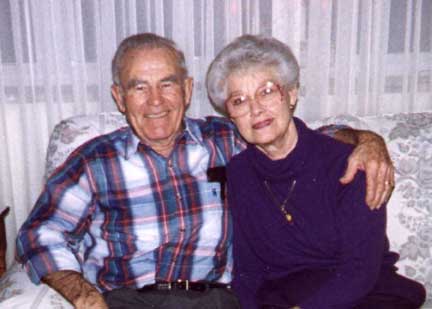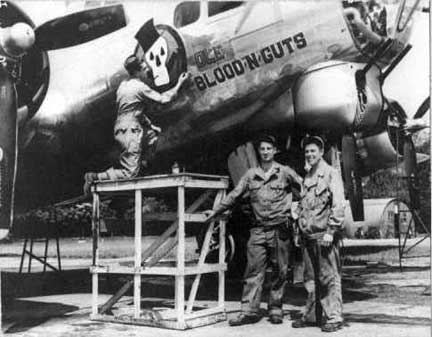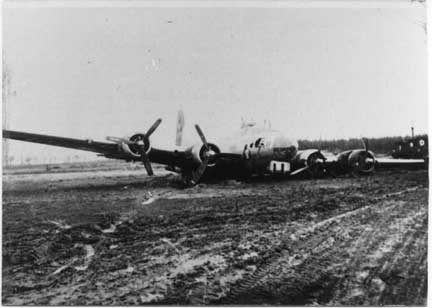   |
|
   |
|
The Little Engine That Could…. And Did
By George R. Hilliard Flight Line Chief, 603 Squadron, 398th Bomb Group Eighth AF Station 131, Nuthampstead, England
When the subject of aircraft performance is discussed, we seldom hear about the power plant that propelled our B-17 Flying Fortresses through the air. The B-17G was equipped with a Wright Cyclone R-1820-97, a nine cylinder radial engine with 1,000 GP. With the addition of the turbo supercharger, Honeywell controls and the paddle propeller, the B-17G could reach an altitude of 35,000 feet with a full bomb load. Under ideal conditions, the B-17G could reach a maximum speed of 302 miles per hour and cruise at 160 miles per hour with a range of 3,750 miles.
The R-1820-97 was not considered a frugal engine for fuel, although fuel consumption during World War II days was not a factor as it is today. Records show that the 398th Bomb Group, during a one-month period from May 6 to June 6, 1944, consumed 901,994 gallons of 100 octane gasoline. Wright Cyclones also powered the B-29 Superfortress with the R-3350 engine. This was a 2,000 horse power, 18-cylinder Duplex. Later came the R-4360, a 28-cylinder engine that turned out 3,500 horse power which was used on then C-124 Globe master airplane.
Submitted by Wally Blackwell, abstracted from the April 1994 issue of the Flak News. 


Printed in Flak News Volume 9, Number 2, Page(s) 8, April 1994 |
| Note: The above article has been placed on the 398th Bomb Group Memorial Association web site to share our history with a wider audience. You may view, download, print, copy and link to our content as you wish as long as the uses are personal or educational. 398th Bomb Group Memorial Association web page content cannot be used for commercial purposes nor placed on other web sites whether commercial, personal or educational, unless authorized in writing by the 398th Bomb Group Memorial Association Official Board and/or the author. |
